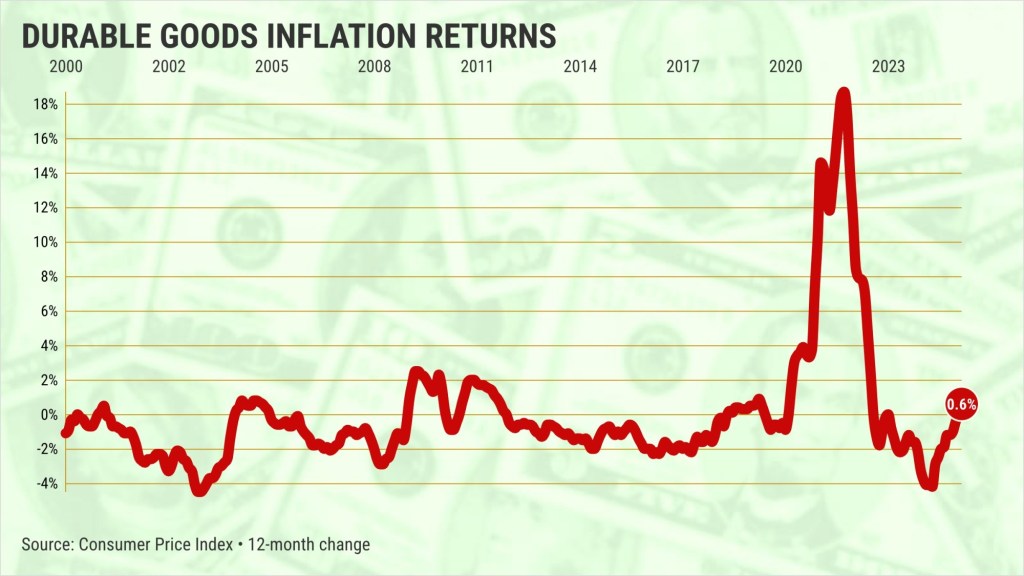
If you want to see where the Trump administration’s trade policies may be affecting your household’s checkbook, consider the slice of consumer spending known as “durable goods.”
These are the things you buy that, by Consumer Price Index definition, are expected to last for three or more years. You know, those “big-ticket items,” as economists say – from vehicles to furniture to appliances to electronics to recreational equipment.
June’s CPI suggests that recent discounts on these items may be coming to an end. Durable goods, which are 11% of the overall CPI math, rose at a 0.6% annual pace in June. Inflation for all goods and services was 2.7%.
Now, the pop in durable goods is meek inflation, yet it’s the first increase since November 2022.
Still, are durable goods a warning signal of inflation’s revival due to tariffs imposed on imported goods by the new administration?
Do not forget that U.S. shoppers, before the pandemic era, had long enjoyed discounted durable goods, thanks to the widespread acceptance of global trade. Americans seemed to love buying these cheaper goods, many of which were made in foreign factories.
A long fall
In the first 20 years of this century, the prices of durable goods, as measured by the CPI, fell on average by nearly 1% per year. The overall CPI increased by 2.1% annually in the same period.
That meant that $1,000 of durable goods in 2000 cost $830 in 2020, just as coronavirus would upend the global economy.
Business restrictions during the pandemic era shattered a long-established global supply chain that had moved inexpensive products around the world. Items that were once widely available in U.S. stores, such as furniture, appliances, and automobiles, were suddenly scarce.
Durable goods inflated by 21% in 2021 and 2022, according to the CPI. It was a key reason overall inflation surged 12% in those two years.
Normal conditions
The easing of coronavirus-related business restrictions eventually restored shipping normalcy, and durable goods prices in the U.S. were back in decline: down 1.3% in 2023 and 2.8% in 2024. Overall inflation chilled, too: up 3% in 2023 and up 2.6% last year.
Then came 2025, and a worldwide debate over trade practices was stirred by Donald Trump’s “America First” policies. And durable goods are inflating again, though at the moment just by a smidge.
Perhaps June’s modest price increase is a short-lived blip. Exporters, logistics firms and/or merchants could absorb most of the costs of new tariff policies – saving U.S. consumers from most of the hikes in trade costs.
However, if you’re looking for hints of where inflation may emerge due to all the trade frictions, June’s CPI provided one.
You may want to consider some big-ticket household expenditures sooner rather than later.
Jonathan Lansner is the business columnist for the Southern California News Group. He can be reached at jlansner@scng.com



